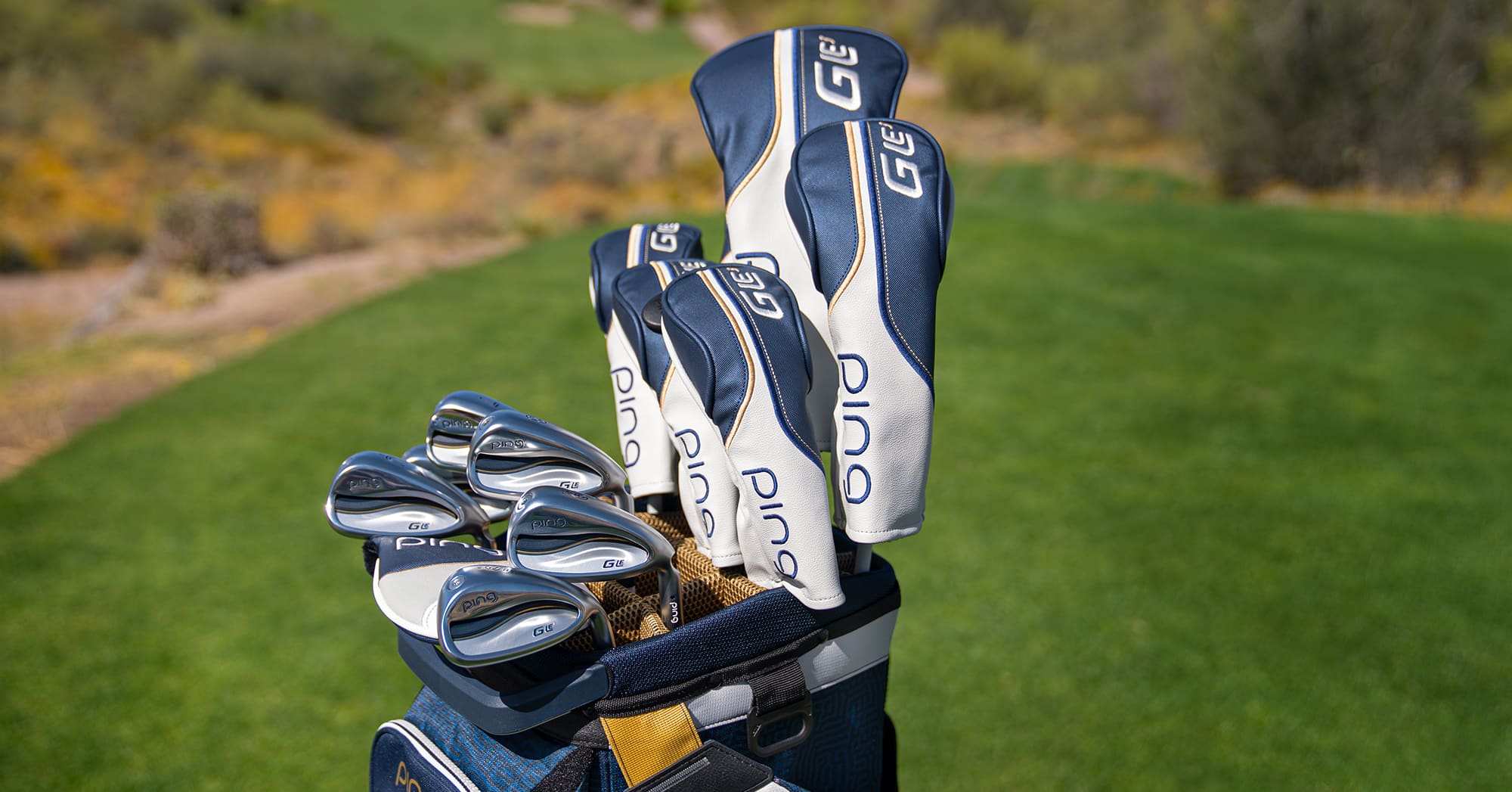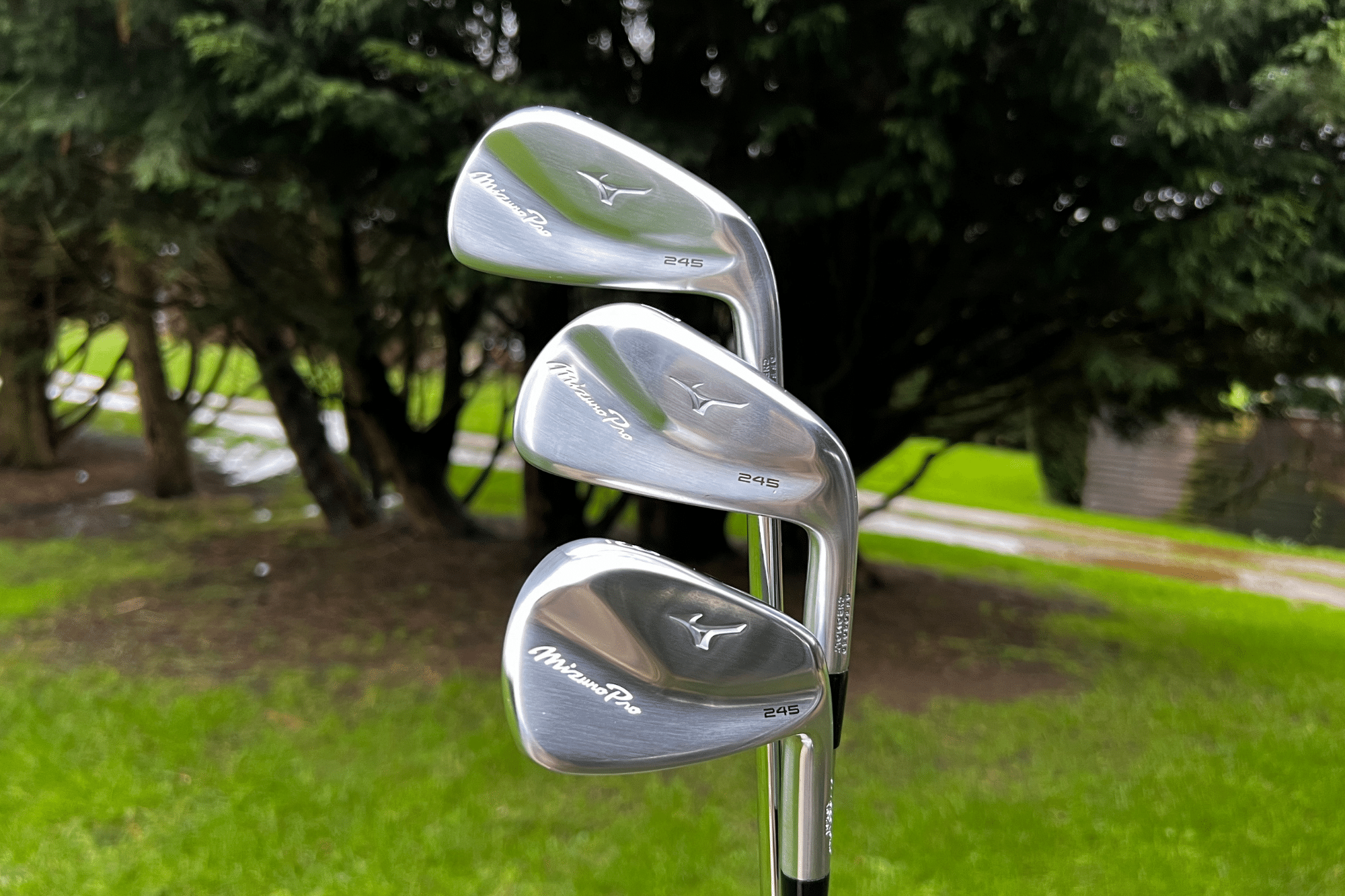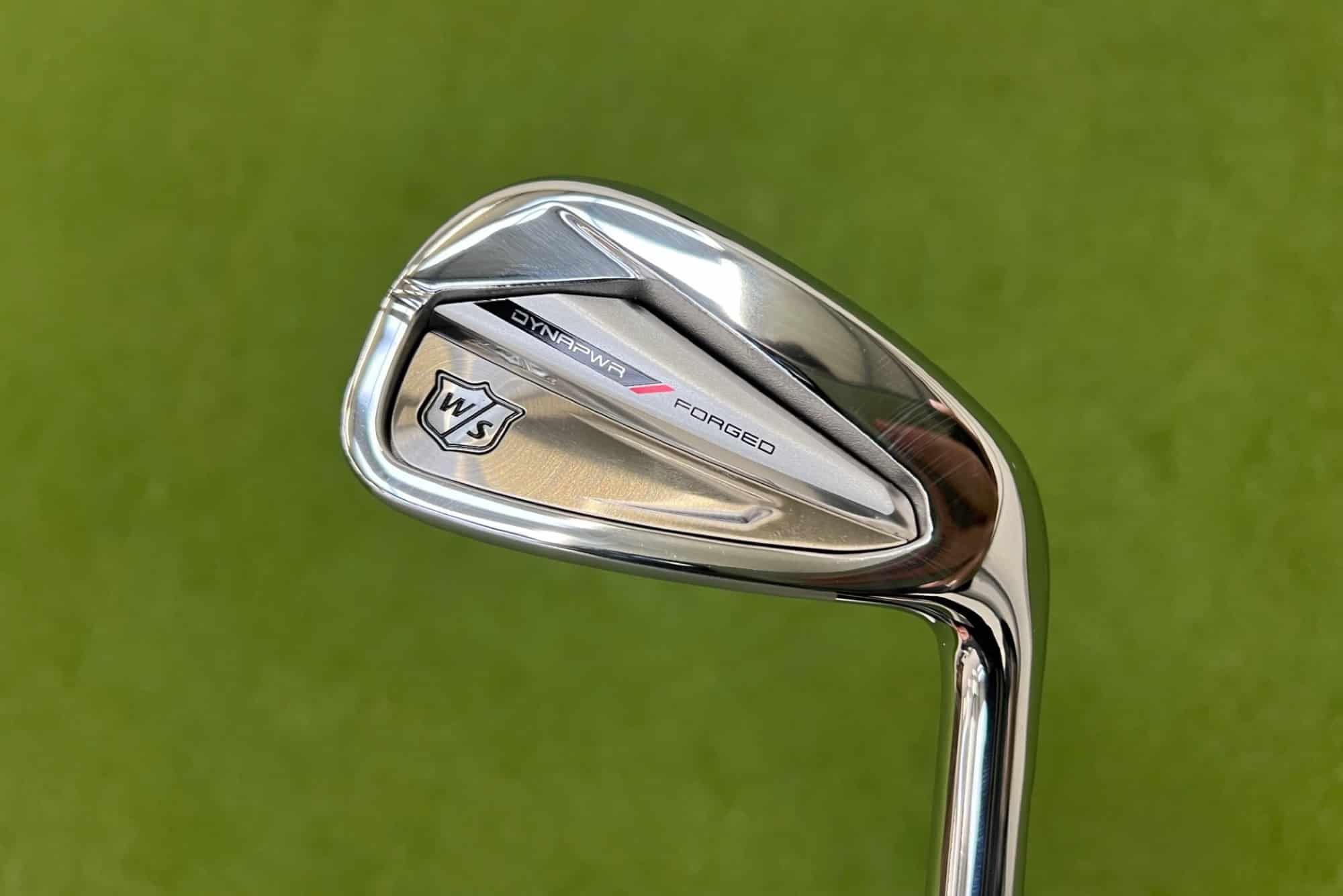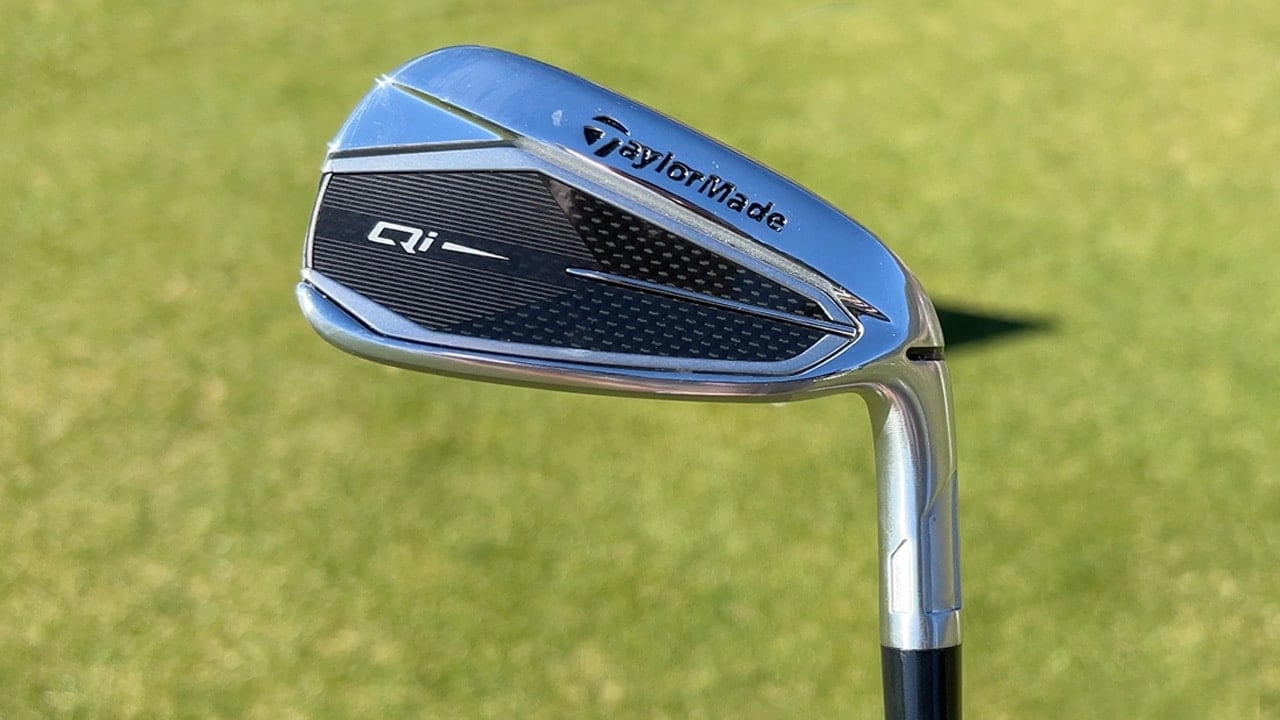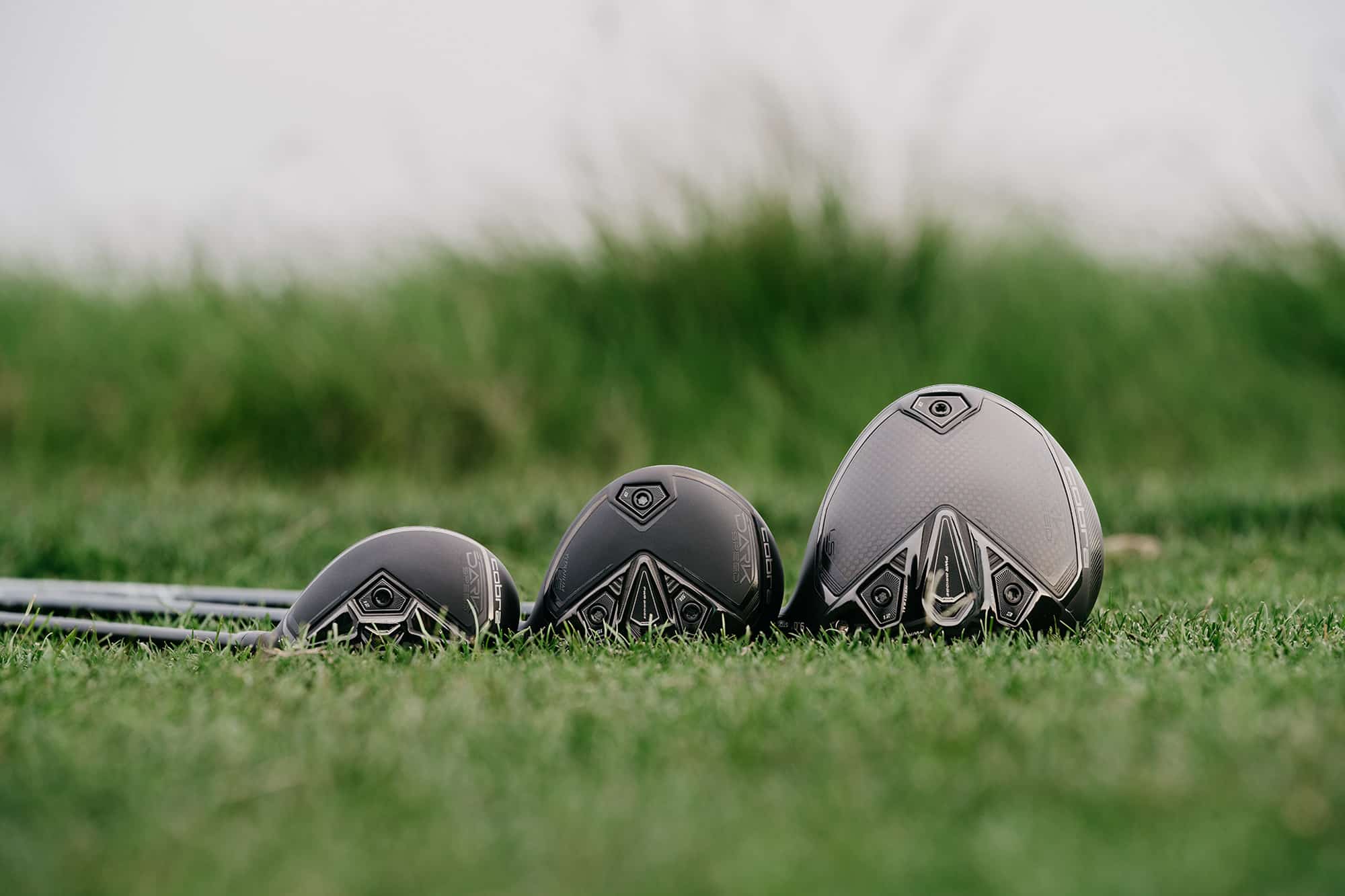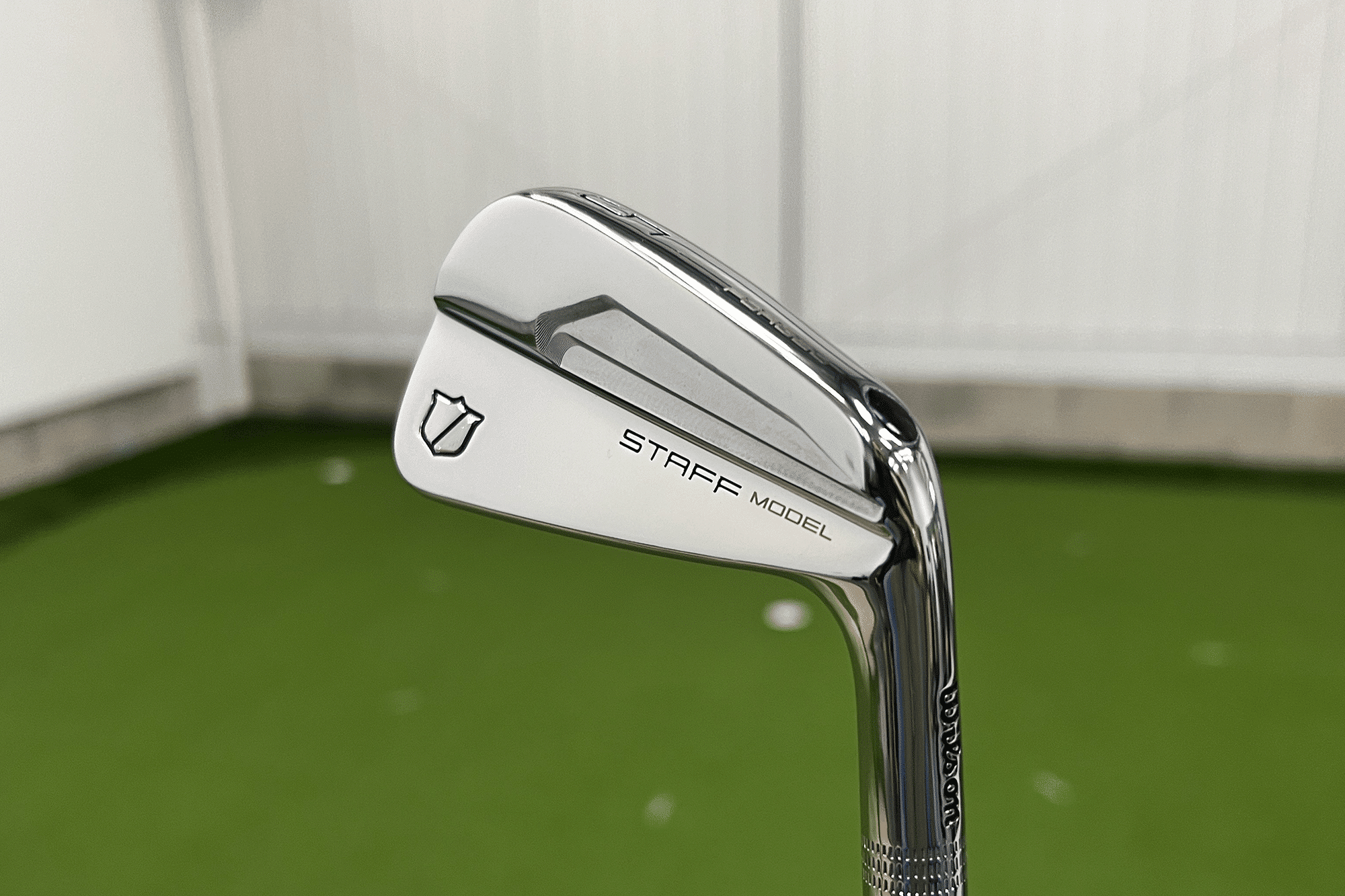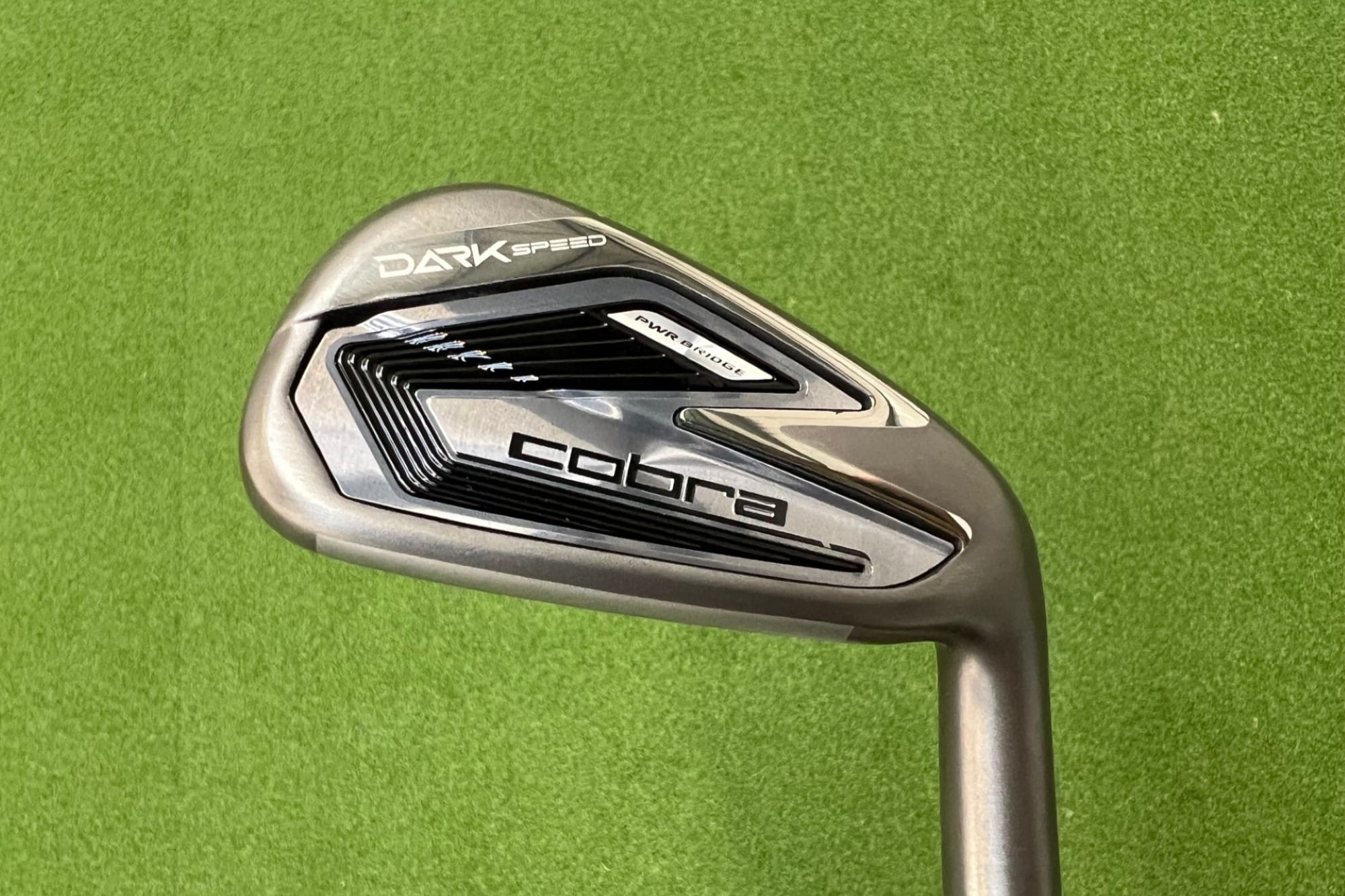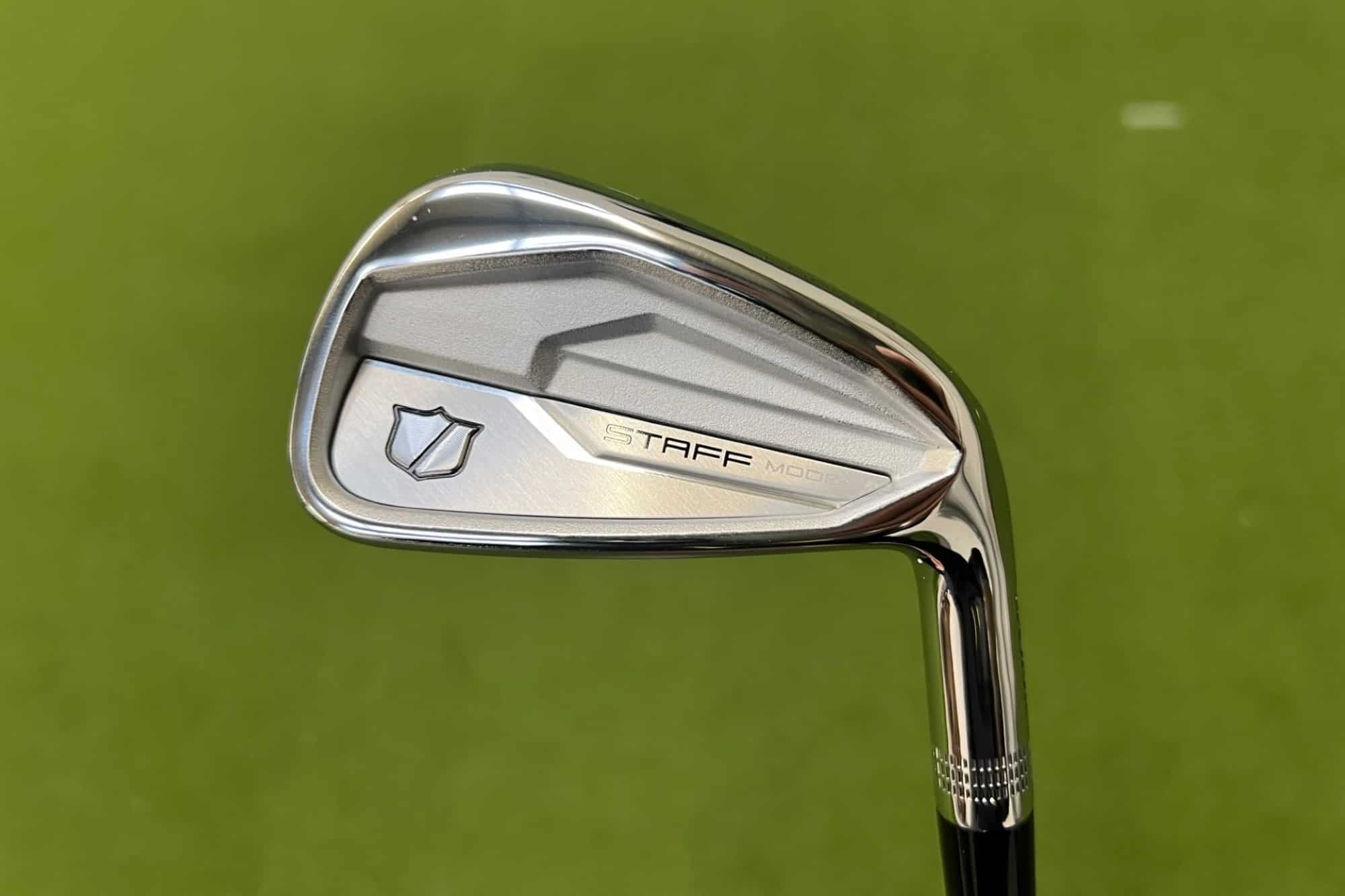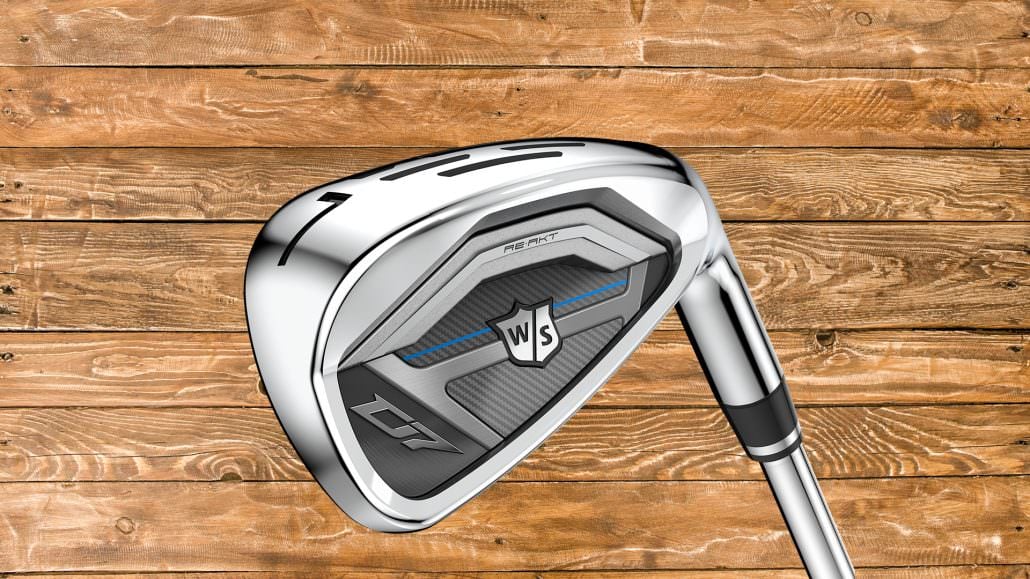
Wilson’s longest yet? We tested the D7 irons
Our Wilson D7 irons review took place at the brand’s launch event at Castle Royle near Reading and at Leicester Golf Centre using their Toptracer technology.
We know from the letter ‘D’ that these are Wilson’s distance irons.
So the Wilson D7 irons replace the D300 range and are aimed more at mid-high handicappers.
Their C300 range sits in the middle and the FG Tour range are aimed at elite golfers.
Wilson D7 irons review: First impressions
I like the design of these clubs. There’s clearly some visual technology but not quite as much as we have seen in the D300 and C300 range.
The D7 irons are quite clean and simple with a really nice, shiny chrome finish.
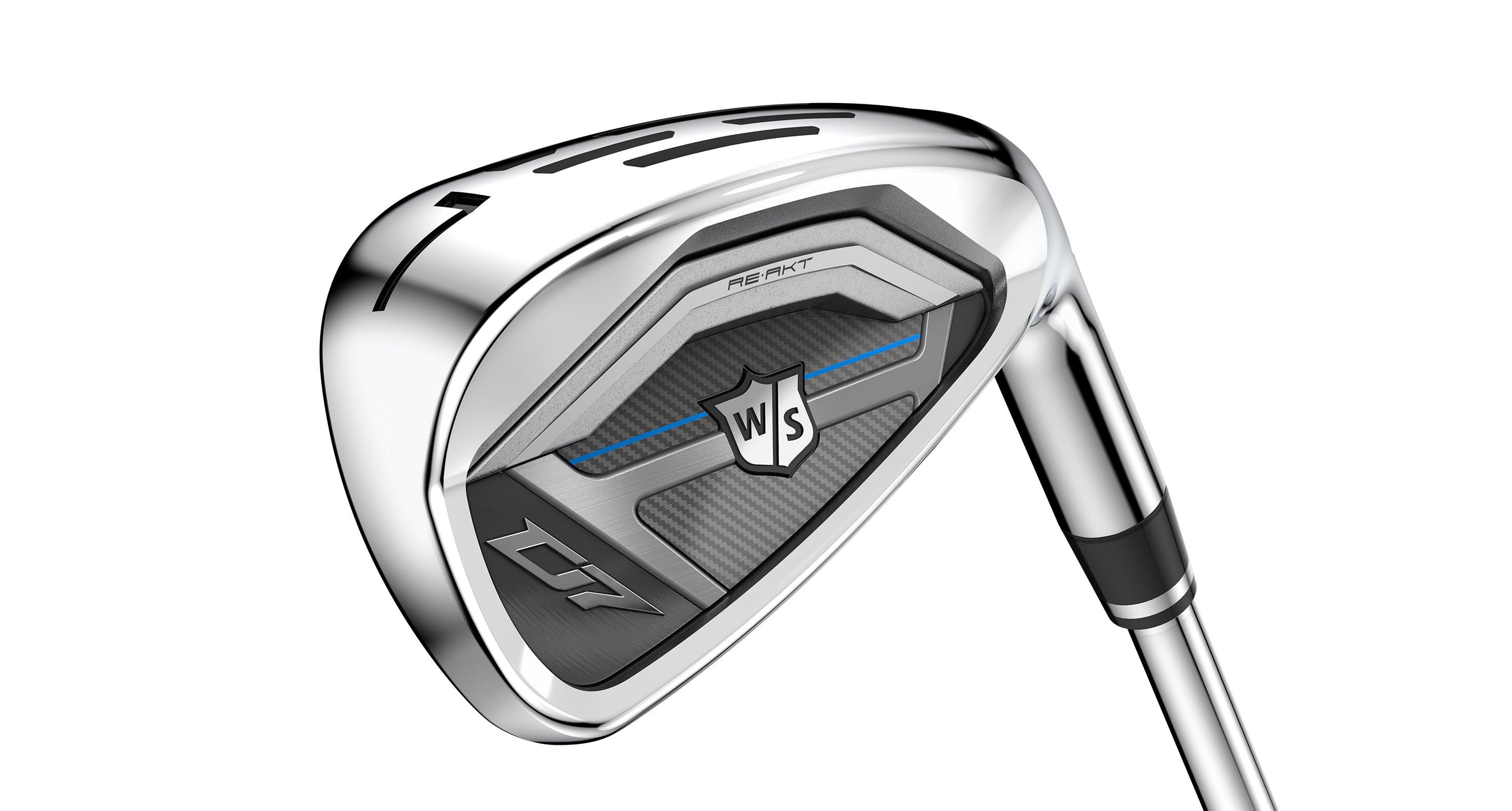
They are still quite large and do have a fair bit of offset but they are by no means offensive.
I like the subtle branding too.
For a super game-improvement iron, I think Wilson have done a good job at squeezing a lot of technology into a decent-looking package.
This will be one of Wilson’s mass market products for 2019 so the price point is pretty friendly too.
A 5-SW set of the Wilson D7 irons will set you back £469 which before I have even hit them tells me that’s a very competitive price.
Wilson D7 irons review: The technology
Wilson say that the D7 irons will give you power when you need it and precision when you want it.
That’s all well and good but how are they going to deliver on that promise?
Well, we’ve still got Wilson’s ‘power hole’ technology like we saw in the C300 and D300 but this time it’s more progressive meaning more power holes in the longer irons and fewer in the short irons.
The power holes help add ball speed by allowing the face the flex a bit more.
We’ve got three rows on the 4-7 irons, two on the 8- and 9-iron and one on the pitching wedge.
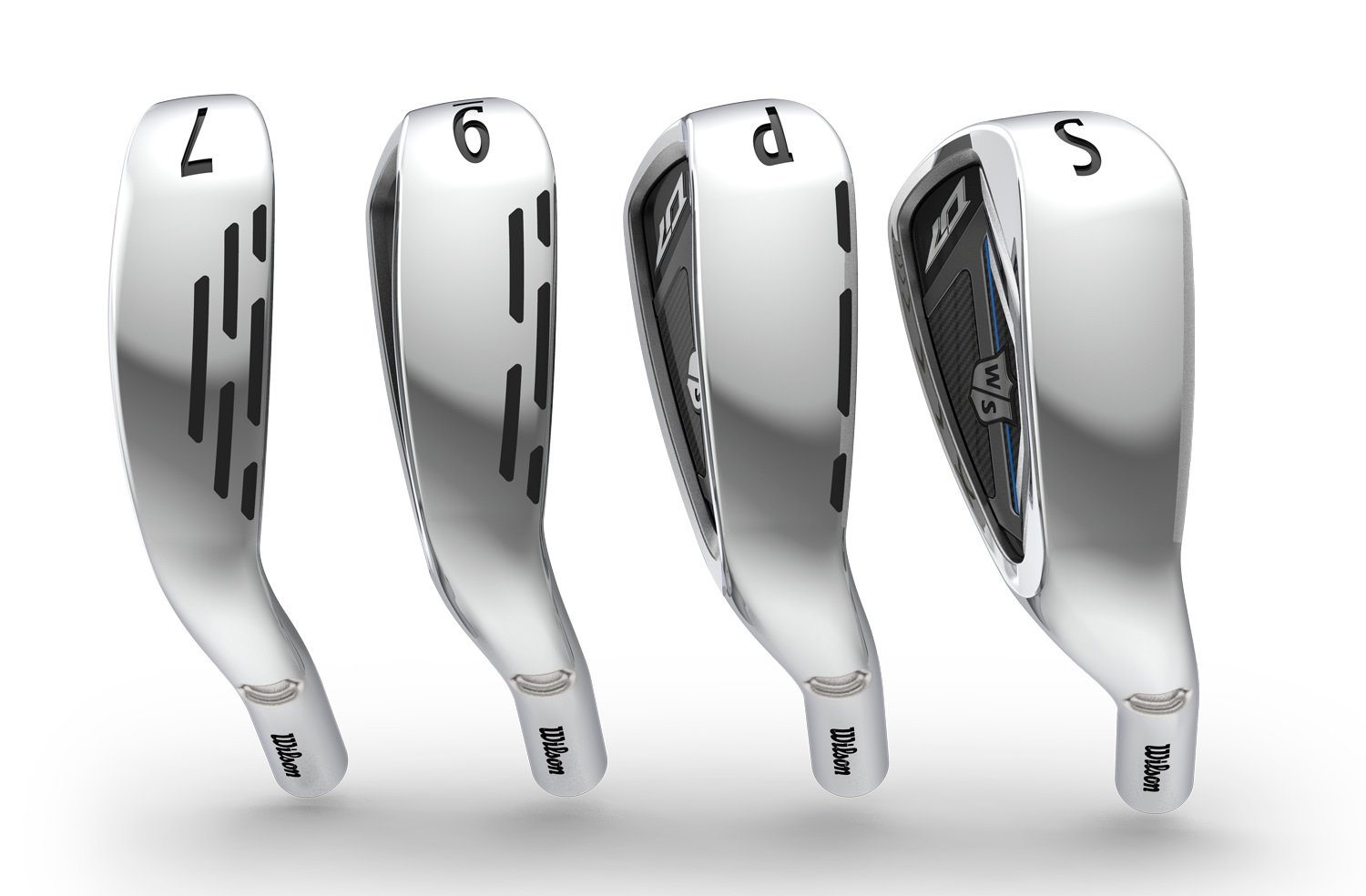
And another thing I like about the D7 irons is that they’ve done away with the power holes on the top line.
I understand the need for visible technology in products of this nature but I think seeing the power holes in the address position was a possible turn-off for golfers looking at the C300 and D300.
So we’ve got a much cleaner look at address with the D7 which isn’t going to put anyone off from the outset.
We’ve also got an ultra thin face and even lower CG than with the D300 which is very important considering the lofts on these irons.
There’s an eye-watering 28 degrees of loft on the 7-iron here but Wilson say the low CG will still help launch these irons nice and high to make them playable.
Wilson say they have also increased the MOI by 10 per cent on their predecessors.
There’s some pretty decent KBS steel and UST-Mamiya graphite shafts as stock options which adds even more value for money.
So how did they perform for our equipment editor? Find out on the next page…
James Savage
Former equipment editor of NCG. Inconsistent ball-striker and tea-maker.


